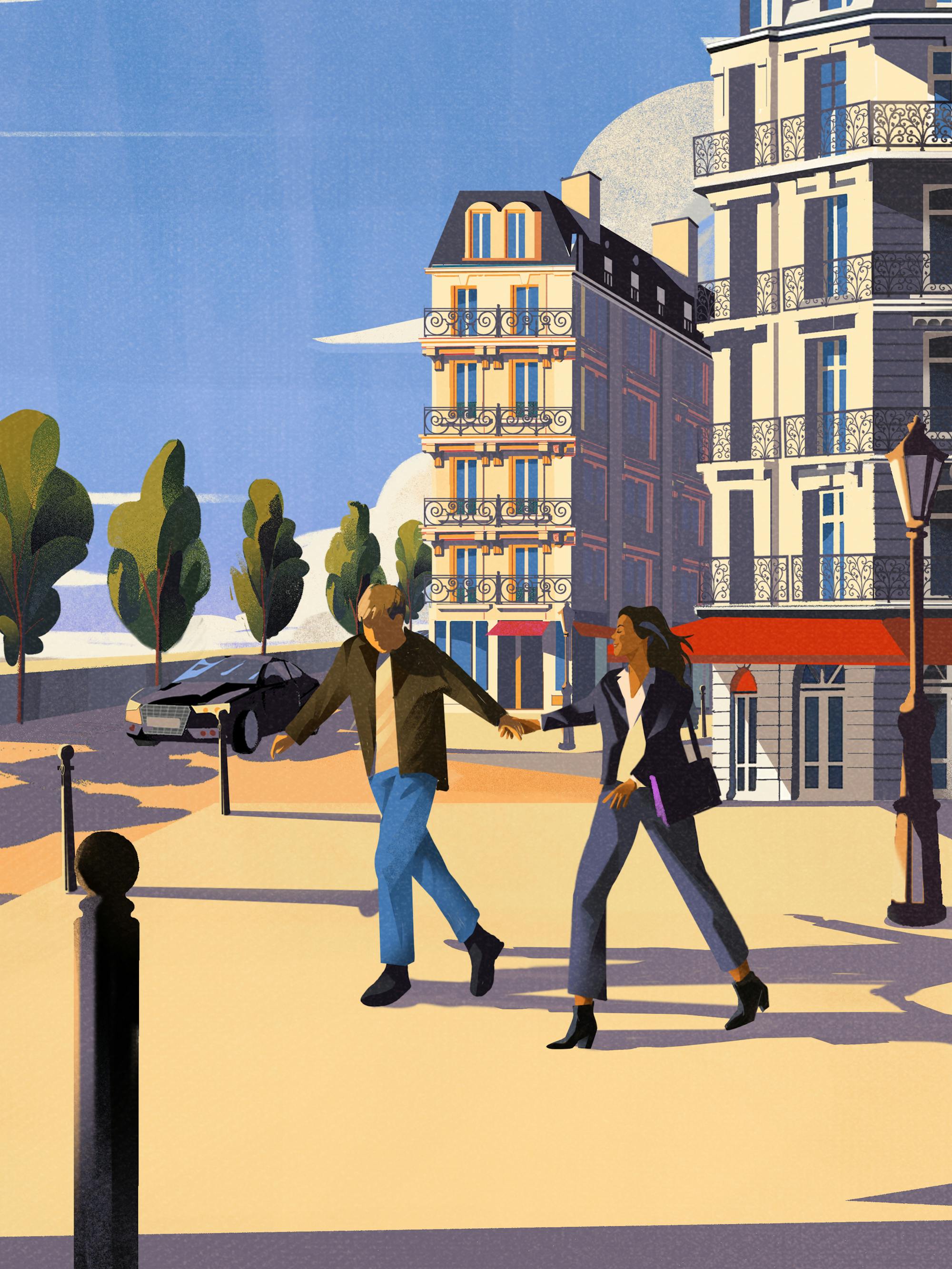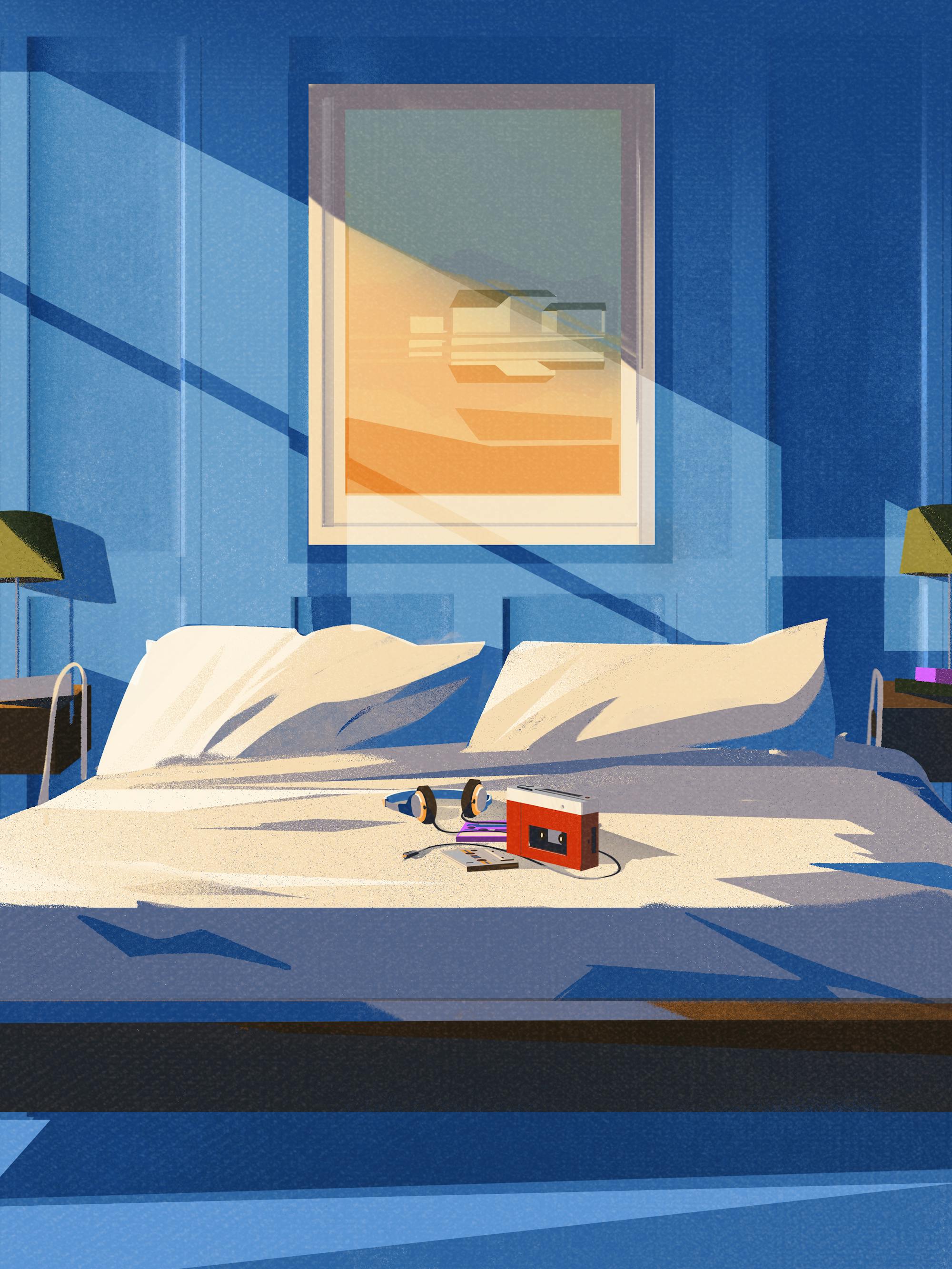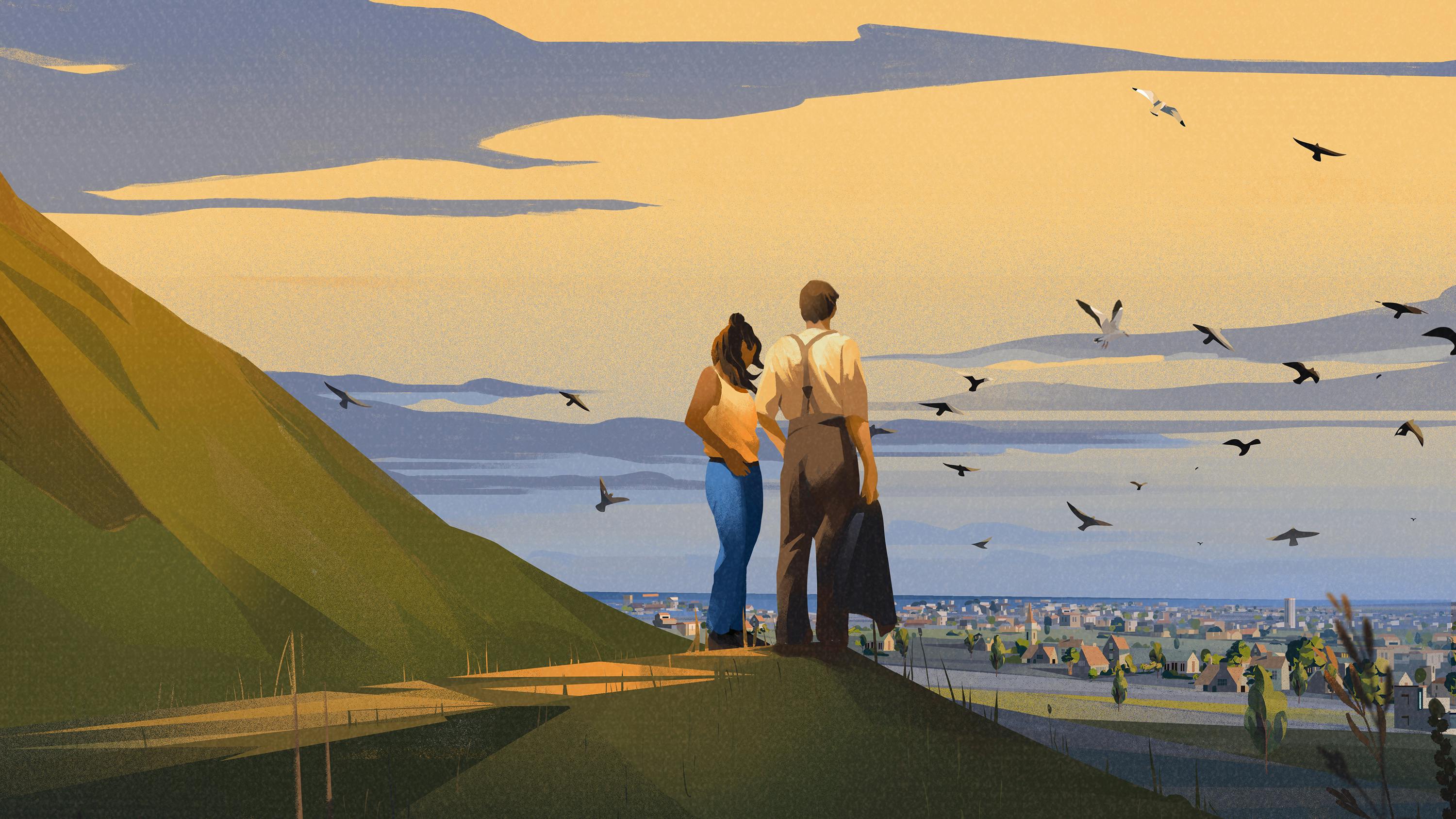On setting the book in motion.
There’s a reason why audiences love a slow-burn romance. Whether they are separated by distance, afflicted by poor timing, or suffer from moments of unrequited love, some of the greatest love stories are years in the making. And in the case of characters Dexter Mayhew and Emma Morley in One Day, it takes nearly two decades to figure it out.
Published 15 years ago, David Nicholls’s novel One Day explores the unlikely friendship between Dex and Em who meet on July 15, 1988, right after their college graduation. Over 20 years, Dex and Em’s friendship intertwines and embeds itself — whether apart or together — into their respective lives. It’s a story that also found its way into the heart of Scottish showrunner and executive producer Nicole Taylor (Wild Rose) when it was first released.
Much like how Dex and Em would fall in and out of each other’s lives, One Day eventually found its way back to Taylor — and she would be given the daunting task of adapting the beloved book into a television series.
For Queue, Taylor discusses the process of translating such an adored book for the screen, working alongside author Nicholls, and more.

An illustration of Emma Morley
ON HER FIRST MEMORIES OF THE BOOK
I read it when it first came out and I was instantly obsessed. There was a time in London when you would look around and everyone in your tube carriage would be reading the book. For me, and pretty much, every woman of my age, the character of Emma was one that we all hugely related to. She’s one of the most well-drawn female characters in fiction I think, and the opportunity to paint her over 14 episodes was incredibly exciting to me.
ON ADAPTING THE BOOK INTO A SERIES
All these years after [first reading the book], I had just had a baby when I was approached about adapting the book. I reread it almost hoping it wasn’t as good as I remembered, so I could turn it down and stick with the year-off-look-after-the-baby plan. I read it in a single sitting — it wasn’t just as good as I remembered; it was better. I felt everything I’d first felt when reading it and more because I was older now and had been through more of the life stages depicted in the book. TV is the perfect medium for adapting this book as it’s episodic by nature, and Netflix allowed us as much time as we needed to tell this story. It’s a story about love and friendship but you need to know the characters as individuals, so it was great having 14 episodes to do that.
ON EXPLORING THE NOVEL’S THEMES IN THE SHOW
Emma’s lack of self-confidence was enduringly interesting to me. I think it was quite typical of any young woman from that class background trying to get into the creative world. It was something that I had a lot to say about and was equally as interested in as I was with the romance plot. Emma moves in the opposite direction [as Dex] — her self-confidence gradually increases over time. By the Paris chapter, he feels he has so many doors now closed to him and she feels there are so many opportunities for her.

An illustration of Dexter Mayhew and Emma Morley
ON AMBIKA MOD AND LEO WOODALL TURNING INTO EM AND DEX
When you’re writing it, you are just trying to do your best for the book. That was my “take” insofar as I had one — I wanted to try and get as close to the feeling of reading the book as possible. Once we saw the casting tapes [for Ambika and Leo], everyone was instantly aligned. Since I’ve always been obsessed with the character of Emma, finding the best actor for her was particularly thrilling, and once Ambika had the role, it felt like I was writing for her. That was joyful for me because she has so much of the intensity that I wanted to bring out of the character. She does my favorite thing that actors do, which is communicating so much without any dialogue. Leo is divine and brings something new to the character because he’s not a generic English posho, he’s quite vulnerable. The question for all of us was: Do you want to watch eight hours of these people? And I thought, Yes, give me 18 hours of them!
ON USING MUSIC AND COSTUMES TO ILLUSTRATE TIME GAPS
David himself was all over [selecting] the music alongside music supervisor, Matt Biffa, which was amazing. We collectively decided early on that we didn’t want specific nods to what would exist in people’s collective memory of that time. Obvious signifiers can take people out of a story and distract them. I felt like my job was to focus on the foreground and whatever was going on emotionally, but the production as a whole made sure that the atmosphere was appropriate to the period. The design, costume, hair, and makeup . . . every element combined to evoke the period.
ON AUTHOR DAVID NICHOLLS
It was daunting to approach [adapting the book] because you don’t want to screw up one of your favorite books and because of the author, David Nicholls. I admire him so much as a novelist and as a screenwriter; he’s done some of the best adaptations. He’s an executive producer on One Day and working with him was one of the highlights. He’s truly the most open and collaborative partner, and we worked so well together. There was no sense of his breathing down my neck; rather I sought him out as a mentor, sounding board, and friend. I felt like I had such freedom but also so much of support from him.

An illustration of cassette tapes and a cassette player on a bed.
ON LIFTING DIALOGUE FROM THE BOOK
Since David is a screenwriter, I think he writes particularly good dialogue. I wouldn’t normally be in the business of taking dialogue directly out of novels, but so much humor comes from specific dialogue in the book. Where it felt good and made sense, I just went for it. It helped capture the period, too.
ON THE MOST DIFFICULT PART OF ADAPTING
Jumping from year to year without any explanation for the time that had elapsed [was the biggest challenge]. As a viewer, I like when you’re asked to bring something to the table, and you have to wonder and fill in the blanks rather than getting all the answers. I think the challenges were specific to the format — making sure the jump in time is compelling and not confusing. There was a moment when filming [the Paris episode] where Dex is visiting Emma and mentions them having sex, which the viewers didn’t see. That might seem counterintuitive, but actually, there’s something much more dramatic at stake in the aftermath of a drunken encounter than there is in watching the encounter itself. I’m glad we had the confidence to do that.
ON WHAT SHE HOPES EVERYONE WILL RELATE TO
I think it’s incredibly universal to have one person in your life who has this weighted significance despite not having much in common [with you]. One of the most thrilling, mysterious, and beautiful things in life is the way one person can just see you and you see them and there’s no explanation for it. Sometimes that’s challenging and provocative and uncomfortable and unpleasant, and other times it’s healing and helps life make sense when everything is in chaos. I feel like that is so universal and bigger than romance; it’s this cosmic thing that endures over time with no rational explanation.
ON WHAT SHE HOPES LOVERS OF THE BOOK WILL TAKE FROM THE SHOW
I hope they look at Ambika and Leo and think, Yes, that’s my Emma, that’s my Dexter. I hope they find it cathartic and uplifting and funny and devastating and transfiguring! I’m laughing at myself now because these sound like very overblown aspirations but that’s how I felt reading the book. I felt everything! And that’s what I want the viewers to feel too.
